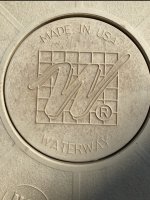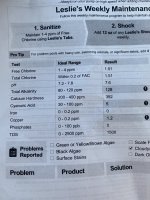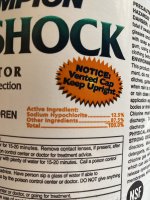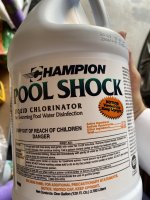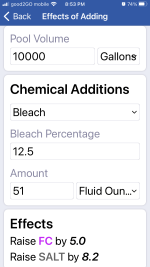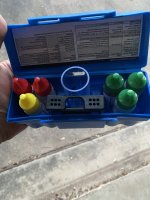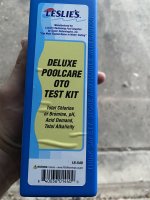After getting my vacuum hose stuck in my skimmer hole, I am trying to find the right size skimmer plate. The basket hole is about 8 inches wide and the skimmer cover is made by Waterway, 519-6450. Other skimmer plates that I’ve used will not stay on when I vacuum the pool. Any thoughts? It appears there are grooves in the skimmer basket hole rim, so perhaps the plate locks in? Also, I always have a fine white sediment on the bottom of my pool. No matter how many times I vacuum it up it just seems to come back. I welcome feedback on that as well. Many thanks.
Skimmer plate size and white sediment
- Thread starter Esl3
- Start date
You are using an out of date browser. It may not display this or other websites correctly.
You should upgrade or use an alternative browser.
You should upgrade or use an alternative browser.
- Jun 1, 2018
- 13,747
- Pool Size
- 26000
- Surface
- Vinyl
- Chlorine
- Salt Water Generator
- SWG Type
- Hayward Aqua Rite (T-15)
How old is your pool?
If it was born in 2013 or later this may be plate you need. It looks as if it locks in place.
 As for the sediment-
As for the sediment-
What kind of filter do you have?
Can you share your latest test results?
Fc
Cc
Ph
Ta
Ch
Cya
Salt (if applicable)
If it was born in 2013 or later this may be plate you need. It looks as if it locks in place.

WATERWAY RENEGADE VAC PLATE 2013 +
WATERWAY RENEGADE VAC PLATE 2013 +: GUNITE VAC PLATE. . 519-6480R1
waterwayparts.com
What kind of filter do you have?
Can you share your latest test results?
Fc
Cc
Ph
Ta
Ch
Cya
Salt (if applicable)
Thank you. I’m almost certain it was built before 2013. See pic for last water test (before I added the necessary chemicals). I thought the white sediment could be calcium hypochlorite from my chlorine shock, but the calcium level is normal. I use a sand filter, but replaced it with glass about 5 years ago. I feel like the sediment starting showing up shortly after. Maybe a broken lateral? My pool pump motor is working (variable speed), but probably needs to be replaced soon. My booster motor for my Polaris seems to be shot. Polaris will not move when the booster is running.How old is your pool?
If it was born in 2013 or later this may be plate you need. It looks as if it locks in place.
As for the sediment-
WATERWAY RENEGADE VAC PLATE 2013 +
WATERWAY RENEGADE VAC PLATE 2013 +: GUNITE VAC PLATE. . 519-6480R1waterwayparts.com
What kind of filter do you have?
Can you share your latest test results?
Fc
Cc
Ph
Ta
Ch
Cya
Salt (if applicable)
Attachments
- Jun 1, 2018
- 13,747
- Pool Size
- 26000
- Surface
- Vinyl
- Chlorine
- Salt Water Generator
- SWG Type
- Hayward Aqua Rite (T-15)
Is the water cloudy or its just the sediment?
Using large amounts of cal hypo can certainly cause cloudiness, so can algae.
Your ch (if that is a correct result) is high enough & cal hypo should be discontinued.
It is not recommended for daily chlorination.
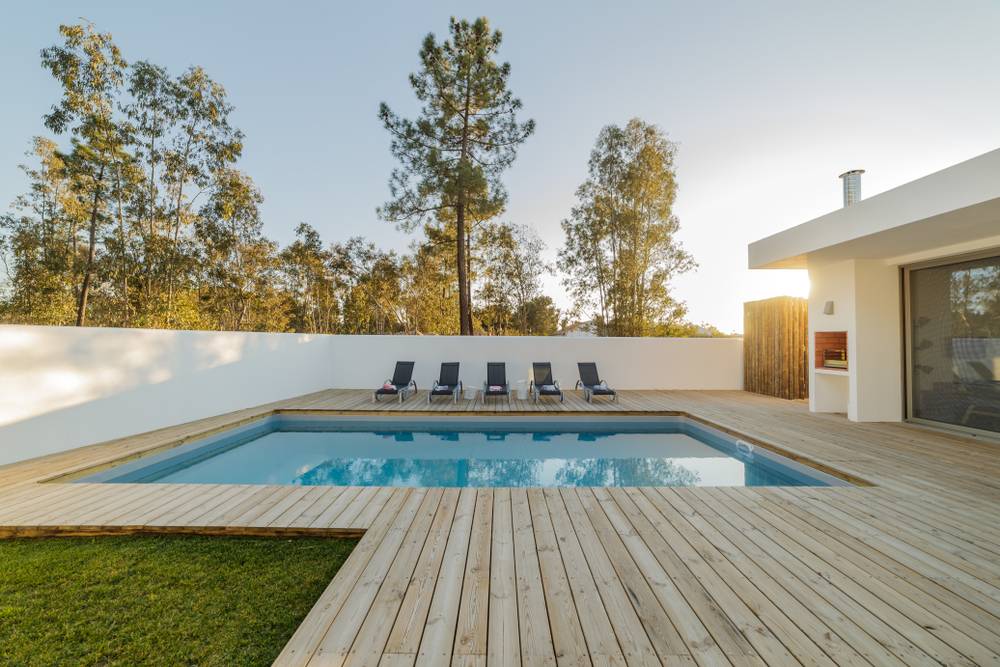
 www.google.com
www.google.com
Sand filters are designed to work best with sand although not sure if that’s your current issue.
But if you’re planning on inspecting it anyway its a good time to just go back to sand. You can always add a little DE to the sand to help catch smaller particles.
Leslie’s idea of recommended chemicals & levels varies greatly from ours as they are in the business of selling you products. Their “free” testing isn’t really free.
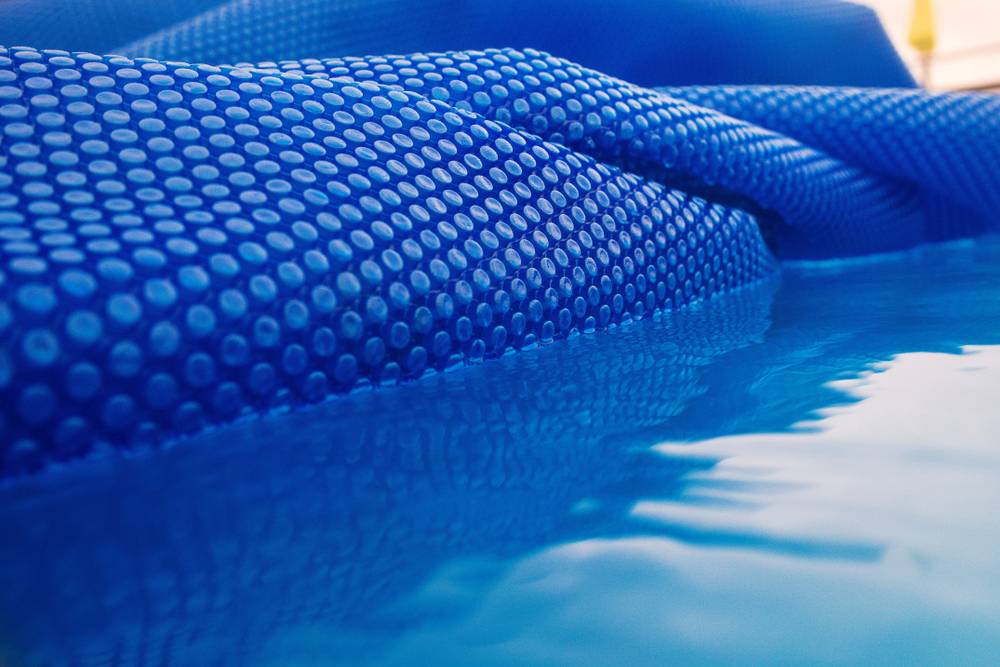
 www.troublefreepool.com
FC/CYA Levels
www.troublefreepool.com
FC/CYA Levels
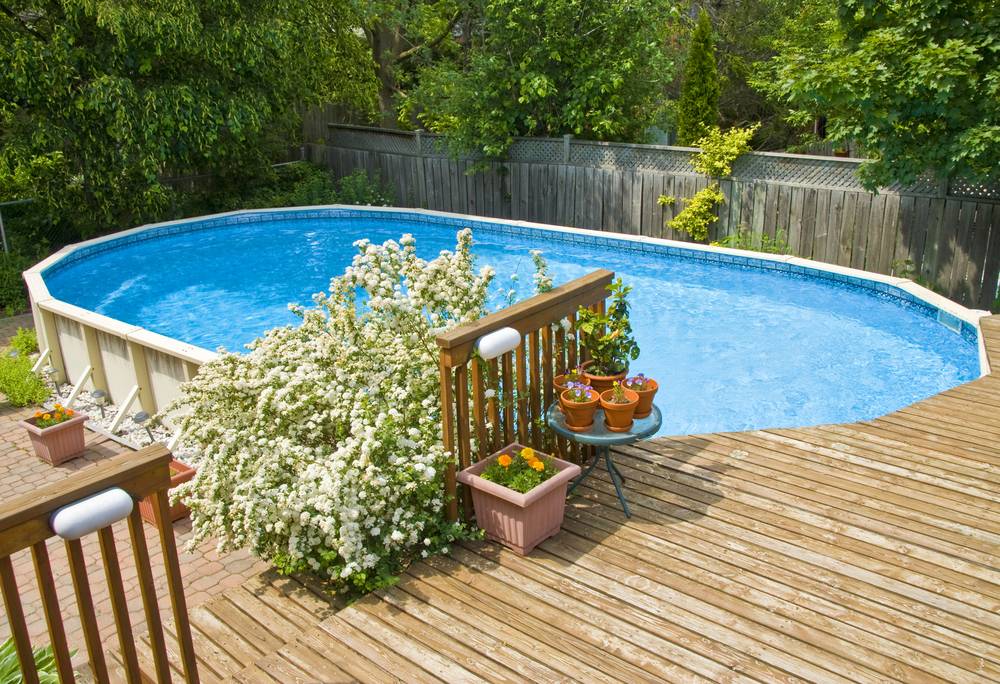
 www.google.com
www.google.com
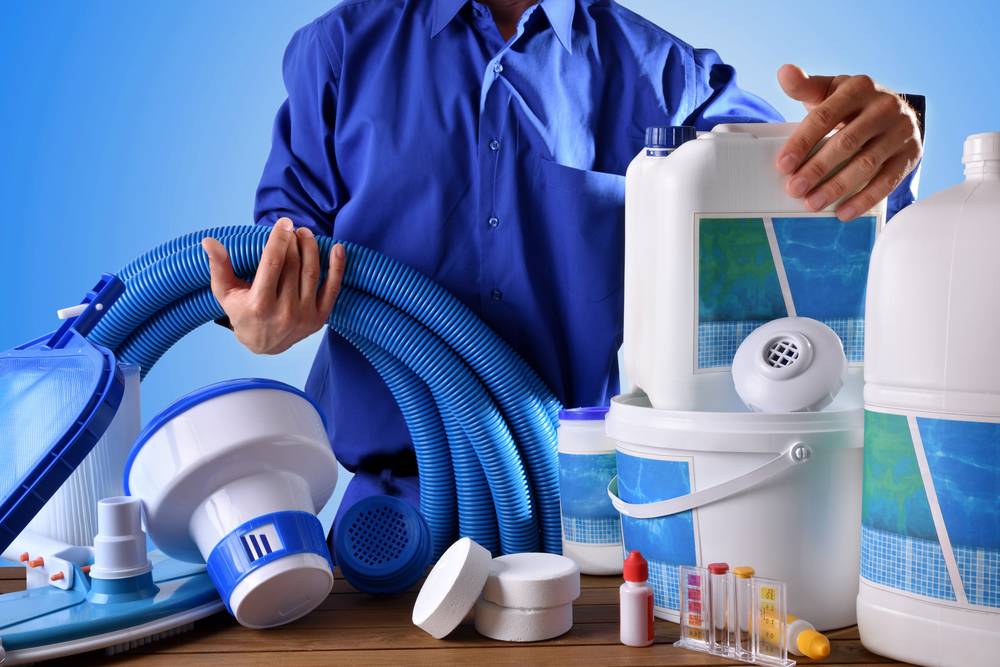
 www.google.com
The first step to getting your pool in order is getting your own reliable test kit that you can use frequently
www.google.com
The first step to getting your pool in order is getting your own reliable test kit that you can use frequently
Taylor k2006c or tf100/pro
Also pool store test results are fraught with inconsistencies (especially cya) and your pool chemistry should be monitored on a frequent basis (more than once a week).
This also gets you off if the “reactive” cycle & on to the proactive way of caring for your pool.
Until you have one of the recommended kits in hand you should add 5ppm worth of liquid chlorine to the pool each day. Nothing else.
What are the “recommended” things that you have already added?
How are you currently chlorinating?
Liquid chlorine/Trichlor/dichlor/cal hypo?
*Note*
A bigger problem is Your copper level is quite high - (metals are the only test we recommend getting at the pool store- not because they are the most accurate but because home testing for them is expensive)
does anyone at your house have green hair/fingernails?
Got stains?
Discolored water after adding chlorine?
you should discontinue use of copper containing products immediately & need to exchange almost all your water to get the copper level down to 0.3ppm or less.
See the no drain water exchange

 www.google.com
You can attempt to use sequestrants to “hide” the copper but it will be quite expensive (they must be replenished) and they also have the side effect of clouding the water when used in large amounts. Also, Sequestrants can also only do so much - the solution for pollution is dilution!
www.google.com
You can attempt to use sequestrants to “hide” the copper but it will be quite expensive (they must be replenished) and they also have the side effect of clouding the water when used in large amounts. Also, Sequestrants can also only do so much - the solution for pollution is dilution!
 www.troublefreepool.com
www.troublefreepool.com
Using large amounts of cal hypo can certainly cause cloudiness, so can algae.
Your ch (if that is a correct result) is high enough & cal hypo should be discontinued.
It is not recommended for daily chlorination.

How to Chlorinate Your Pool
Before chlorinating your pool, you should know these simple tips. Learn the best way to add chlorine to your pool.
Sand filters are designed to work best with sand although not sure if that’s your current issue.
But if you’re planning on inspecting it anyway its a good time to just go back to sand. You can always add a little DE to the sand to help catch smaller particles.
Leslie’s idea of recommended chemicals & levels varies greatly from ours as they are in the business of selling you products. Their “free” testing isn’t really free.

What Are My Ideal Pool Levels?
Use our tool to find ideal chemical levels for any swimming pool. Check TFP recommended levels on pH, free chlorine, cyanuric acid, and more.

Recommended Pool Chemicals
Which should I buy? TFP's recommended pool chemicals are cheap, easy, and won't unbalance your pool water.

Non-Recommended Pool Chemicals
These pool chemicals should not be added to your pool. Save your money and frustration and avoid these chemicals!
Taylor k2006c or tf100/pro
Also pool store test results are fraught with inconsistencies (especially cya) and your pool chemistry should be monitored on a frequent basis (more than once a week).
This also gets you off if the “reactive” cycle & on to the proactive way of caring for your pool.
Until you have one of the recommended kits in hand you should add 5ppm worth of liquid chlorine to the pool each day. Nothing else.
What are the “recommended” things that you have already added?
How are you currently chlorinating?
Liquid chlorine/Trichlor/dichlor/cal hypo?
*Note*
A bigger problem is Your copper level is quite high - (metals are the only test we recommend getting at the pool store- not because they are the most accurate but because home testing for them is expensive)
does anyone at your house have green hair/fingernails?
Got stains?
Discolored water after adding chlorine?
you should discontinue use of copper containing products immediately & need to exchange almost all your water to get the copper level down to 0.3ppm or less.
See the no drain water exchange
Draining - Further Reading
Copper in Pool Water - Further Reading
Thank you. My pool was in bad shape. I’ve used many new/different products over the past several months, including two rounds of floc, Leslie's Ultra Bright Advanced Pool Clarifier to clear the water, and a jug of Algatec to get rid of algae, which there was a fair amount of (white, yellow, and maybe even some black) with some still on the pool walls, even after brushing. It’s much better than it was. I think the test results I sent you were before I used the Algetec, but certainly after the others (floc, etc). There is also a good amount of white crust on the pool walls, steps, etc., which is hard and flakes off and could be causing the white sediment. I always use Leslie’s Power Powder Plus 73% Calcium Hypo Pool Shock to chlorinate my pool. Obviously a bad idea. What liquid chlorine do you recommend? Liquid is better I’m sure, just heavily to ship and not as strong. Regarding the copper, I have drained most of the water and replaced over the past couple of months (we are on a community well, so pretty hard water if that makes a difference). I really don’t want to drain the pool given the water restrictions in our area. I have a good testing kit and will make an effort to test it once or twice a week. Thanks again.Is the water cloudy or its just the sediment?
Using large amounts of cal hypo can certainly cause cloudiness, so can algae.
Your ch (if that is a correct result) is high enough & cal hypo should be discontinued.
It is not recommended for daily chlorination.

How to Chlorinate Your Pool
Before chlorinating your pool, you should know these simple tips. Learn the best way to add chlorine to your pool.www.google.com
Sand filters are designed to work best with sand although not sure if that’s your current issue.
But if you’re planning on inspecting it anyway its a good time to just go back to sand. You can always add a little DE to the sand to help catch smaller particles.
Leslie’s idea of recommended chemicals & levels varies greatly from ours as they are in the business of selling you products. Their “free” testing isn’t really free.
FC/CYA Levels
What Are My Ideal Pool Levels?
Use our tool to find ideal chemical levels for any swimming pool. Check TFP recommended levels on pH, free chlorine, cyanuric acid, and more.www.troublefreepool.com

Recommended Pool Chemicals
Which should I buy? TFP's recommended pool chemicals are cheap, easy, and won't unbalance your pool water.www.google.com
The first step to getting your pool in order is getting your own reliable test kit that you can use frequently
Non-Recommended Pool Chemicals
These pool chemicals should not be added to your pool. Save your money and frustration and avoid these chemicals!www.google.com
Taylor k2006c or tf100/pro
Also pool store test results are fraught with inconsistencies (especially cya) and your pool chemistry should be monitored on a frequent basis (more than once a week).
This also gets you off if the “reactive” cycle & on to the proactive way of caring for your pool.
Until you have one of the recommended kits in hand you should add 5ppm worth of liquid chlorine to the pool each day. Nothing else.
What are the “recommended” things that you have already added?
How are you currently chlorinating?
Liquid chlorine/Trichlor/dichlor/cal hypo?
*Note*
A bigger problem is Your copper level is quite high - (metals are the only test we recommend getting at the pool store- not because they are the most accurate but because home testing for them is expensive)
does anyone at your house have green hair/fingernails?
Got stains?
Discolored water after adding chlorine?
you should discontinue use of copper containing products immediately & need to exchange almost all your water to get the copper level down to 0.3ppm or less.
See the no drain water exchange
You can attempt to use sequestrants to “hide” the copper but it will be quite expensive (they must be replenished) and they also have the side effect of clouding the water when used in large amounts. Also, Sequestrants can also only do so much - the solution for pollution is dilution!Draining - Further Reading
www.google.com
Copper in Pool Water - Further Reading
www.troublefreepool.com
Also, the water is cloudy if I don’t add the clarifier.Thank you. My pool was in bad shape. I’ve used many new/different products over the past several months, including two rounds of floc, Leslie's Ultra Bright Advanced Pool Clarifier to clear the water, and a jug of Algatec to get rid of algae, which there was a fair amount of (white, yellow, and maybe even some black) with some still on the pool walls, even after brushing. It’s much better than it was. I think the test results I sent you were before I used the Algetec, but certainly after the others (floc, etc). There is also a good amount of white crust on the pool walls, steps, etc., which is hard and flakes off and could be causing the white sediment. I always use Leslie’s Power Powder Plus 73% Calcium Hypo Pool Shock to chlorinate my pool. Obviously a bad idea. What liquid chlorine do you recommend? Liquid is better I’m sure, just heavily to ship and not as strong. Regarding the copper, I have drained most of the water and replaced over the past couple of months (we are on a community well, so pretty hard water if that makes a difference). I really don’t want to drain the pool given the water restrictions in our area. I have a good testing kit and will make an effort to test it once or twice a week. Thanks again.
- Jun 1, 2018
- 13,747
- Pool Size
- 26000
- Surface
- Vinyl
- Chlorine
- Salt Water Generator
- SWG Type
- Hayward Aqua Rite (T-15)
For algae/cloudy water the answer is the
SLAM Process with liquid chlorine not algaecides & clarifiers.
10/12% liquid chlorine can be found at Walmart, lowes, Home Depot & sometimes pool supply stores/janitorial supplies in bulk. You can also use cheap plain unadulterated household bleach (usually 6-8%) it should have no scent, no splashless, no fabric conditioners, no cloromax etc.
Algaecides are preventatives at best - the one you used isn’t particularly harmful but it is a weak concentration @30%.
 www.troublefreepool.com
Clarifiers are bandaids that do nothing to address the underlying cause of the cloudiness - algae. They also gum up your filter media if used regularly.
www.troublefreepool.com
Clarifiers are bandaids that do nothing to address the underlying cause of the cloudiness - algae. They also gum up your filter media if used regularly.
Floc is also not recommended.
 www.google.com
www.google.com
 www.google.com
www.google.com
What test kit do you have?
Please list your results fom it.
SLAM Process with liquid chlorine not algaecides & clarifiers.
10/12% liquid chlorine can be found at Walmart, lowes, Home Depot & sometimes pool supply stores/janitorial supplies in bulk. You can also use cheap plain unadulterated household bleach (usually 6-8%) it should have no scent, no splashless, no fabric conditioners, no cloromax etc.
Algaecides are preventatives at best - the one you used isn’t particularly harmful but it is a weak concentration @30%.
Algaecide - Further Reading
Floc is also not recommended.
Clarifier - Further Reading
Flocculant - Further Reading
What test kit do you have?
Please list your results fom it.
- Jun 1, 2018
- 13,747
- Pool Size
- 26000
- Surface
- Vinyl
- Chlorine
- Salt Water Generator
- SWG Type
- Hayward Aqua Rite (T-15)
Also check here, several in the austin area
Select distributors
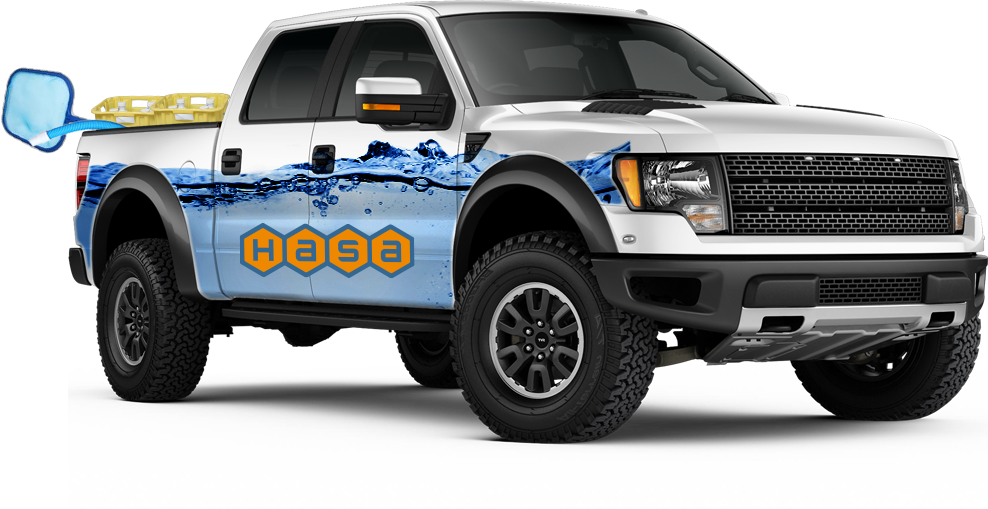
 hasa.com
hasa.com
Select distributors

Find Where You Can Buy HASA Products | HASA
Want to purchase HASA products for your pool or spa? Find out which of our partnered dealers sell HASA Sani-Clor®, Hasachlor®, Classic Bleach and Blue Whale Sanitizer.
Thank you.Also check here, several in the austin area
Select distributors

Find Where You Can Buy HASA Products | HASA
Want to purchase HASA products for your pool or spa? Find out which of our partnered dealers sell HASA Sani-Clor®, Hasachlor®, Classic Bleach and Blue Whale Sanitizer.hasa.com
I have some of this. Not sure what the “other” ingredients are.Thank you.
Attachments
- Jun 1, 2018
- 13,747
- Pool Size
- 26000
- Surface
- Vinyl
- Chlorine
- Salt Water Generator
- SWG Type
- Hayward Aqua Rite (T-15)
- Jun 1, 2018
- 13,747
- Pool Size
- 26000
- Surface
- Vinyl
- Chlorine
- Salt Water Generator
- SWG Type
- Hayward Aqua Rite (T-15)
What is your kit?
Does it contain a cya turbidity test? If so what does it measure?
We really don’t trust pool store cya results & knowing your true cya is extremely important to be sure you are raising the fc to the appropriate level but also being safe & not over chlorinating which wastes chlorine & risks damage to surfaces, equipment or swimmers.
Without at least 30ppm cya any chlorine you add will be consumed rapidly by the sun. Too high of a cya level makes slamming the pool harder to accomplish & more expensive due to the high fc levels you must maintain
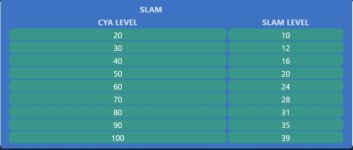
TheSLAM Process / eradicating algae
requires testing fc multiple times per day with an fas/dpd test - other tests do not test high enough fc levels so please let me know exactly what kit you have so we can help you complete it if it is missing something.
The slam process not only ensures that you kill the algae but when followed exactly you then also prove it’s really gone by passing all 3 criteria.
Its not a one & done “dump & pray” but it does work if followed & shouldn’t need to be done again so long as adequate FC/CYA Levels are always maintained thereafter.
Dump & pray is rarely successful for long.
For a successful SLAM Process
you need to continue to MAINTAIN Slam level fc for your cya as often as possible (multiple times per day is best) until you meet ALL 3 end of slam criteria-
You are done when:
 CC is 0.5 or lower;
CC is 0.5 or lower;
 You pass an Overnight Chlorine Loss Test
You pass an Overnight Chlorine Loss Test
AND
 The water is clear.
The water is clear.
(Crystal Clear w/no algae dead or alive)
Do ALL the things
*Check & scrub every nook & cranny where algae may hide {light niches, steps (inside & out), drain covers, ladder handrails, skimmer throats/weirs, abandoned lines, autofill, overflow drains, seam flaps, etc.}
*If water can go there, algae can thrive there.
*Run slam level water through all water features & lines for at least a couple hours a day during the SLAM Process.
*Brush & or vac daily (this breaks up biofilms that algae uses to protect itself from chlorine)
*Backwash/clean filter when pressure rises 25%over clean pressure.
Does it contain a cya turbidity test? If so what does it measure?
We really don’t trust pool store cya results & knowing your true cya is extremely important to be sure you are raising the fc to the appropriate level but also being safe & not over chlorinating which wastes chlorine & risks damage to surfaces, equipment or swimmers.
Without at least 30ppm cya any chlorine you add will be consumed rapidly by the sun. Too high of a cya level makes slamming the pool harder to accomplish & more expensive due to the high fc levels you must maintain

TheSLAM Process / eradicating algae
requires testing fc multiple times per day with an fas/dpd test - other tests do not test high enough fc levels so please let me know exactly what kit you have so we can help you complete it if it is missing something.
The slam process not only ensures that you kill the algae but when followed exactly you then also prove it’s really gone by passing all 3 criteria.
Its not a one & done “dump & pray” but it does work if followed & shouldn’t need to be done again so long as adequate FC/CYA Levels are always maintained thereafter.
Dump & pray is rarely successful for long.
For a successful SLAM Process
you need to continue to MAINTAIN Slam level fc for your cya as often as possible (multiple times per day is best) until you meet ALL 3 end of slam criteria-
You are done when:
AND
(Crystal Clear w/no algae dead or alive)
Do ALL the things
*Check & scrub every nook & cranny where algae may hide {light niches, steps (inside & out), drain covers, ladder handrails, skimmer throats/weirs, abandoned lines, autofill, overflow drains, seam flaps, etc.}
*If water can go there, algae can thrive there.
*Run slam level water through all water features & lines for at least a couple hours a day during the SLAM Process.
*Brush & or vac daily (this breaks up biofilms that algae uses to protect itself from chlorine)
*Backwash/clean filter when pressure rises 25%over clean pressure.
Thank you. I will test later today and start the slam process this weekend. My liquid chlorine has been sitting in my garage for a few years, so it may be degraded. I will buy more this weekend. I assume the amount I need to add on a daily basis is directly related to my chlorine level. Any thoughts on the number of ounces I should start with? I will also send a pic of my testing kit this morning.
- Jun 1, 2018
- 13,747
- Pool Size
- 26000
- Surface
- Vinyl
- Chlorine
- Salt Water Generator
- SWG Type
- Hayward Aqua Rite (T-15)
The oto test you have only measures TC up to 5ppm.
It doesn’t differentiate between fc (good stuff) & cc (bad stuff).
You’re missing the fas/dpd (which measures fc & cc seperately up to 50ppm
& cya test.
There’s also no ch test in that kit.
Probably cheaper to just order the tf100 than all those separately-
If you go for a Taylor kit you want the k2006c (big bottles)not the cheaper k2006 as it has less reagents.
Tf100/tfpro (& all reagents at tftestkits) are Taylor reagents but more of the important ones for a cheaper price.
Reagents have a shelf life of around 2 years if stored properly.
That bottle of chlorine was probably just salt water by now.
Get yourself about 10 gallons of liquid chlorine to have on hand as a start.
You may also want to pick up some cya & muriatic acid to have on hand incase those need adjusting before you can start the slam. We’ll let you know when/if to add them after you can test.
Until your kit comes add 5ppm worth of chlorine each day to keep things from getting worse. You can use the cal hypo for that if its all you have on hand for the next couple days.
PoolMath will tell you how much 5ppm is based on the strength of your cal hypo.
You cannot properly slam without the fas/dpd kit & the cya test so 5ppm/day is a safe amount to add until those come & you can begin the
SLAM Process.
When the kit comes do all the tests & post the results here like this

Fc
Cc
Ph
Ta
Ch
Cya
& we can guide your next steps .
For reference,
The average balanced algae free pool uses 2-5ppm fc/day depending on the season.
Here’s the maintenance fc levels chart for after slam is properly completed -
you should aim for high target or even a scootch above when dosing to ensure you don’t broach minimum before your next dose to avoid getting algae/nasties in the future. Yes, This means you test your current level & then add what poolmath says to reach your target
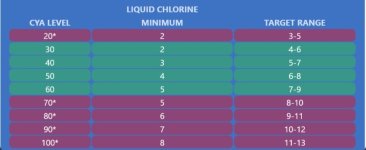
It doesn’t differentiate between fc (good stuff) & cc (bad stuff).
You’re missing the fas/dpd (which measures fc & cc seperately up to 50ppm
& cya test.
There’s also no ch test in that kit.
Probably cheaper to just order the tf100 than all those separately-
If you go for a Taylor kit you want the k2006c (big bottles)not the cheaper k2006 as it has less reagents.
Tf100/tfpro (& all reagents at tftestkits) are Taylor reagents but more of the important ones for a cheaper price.
Reagents have a shelf life of around 2 years if stored properly.
That bottle of chlorine was probably just salt water by now.
Get yourself about 10 gallons of liquid chlorine to have on hand as a start.
You may also want to pick up some cya & muriatic acid to have on hand incase those need adjusting before you can start the slam. We’ll let you know when/if to add them after you can test.
Until your kit comes add 5ppm worth of chlorine each day to keep things from getting worse. You can use the cal hypo for that if its all you have on hand for the next couple days.
PoolMath will tell you how much 5ppm is based on the strength of your cal hypo.
You cannot properly slam without the fas/dpd kit & the cya test so 5ppm/day is a safe amount to add until those come & you can begin the
SLAM Process.
When the kit comes do all the tests & post the results here like this
Fc
Cc
Ph
Ta
Ch
Cya
& we can guide your next steps .
For reference,
The average balanced algae free pool uses 2-5ppm fc/day depending on the season.
Here’s the maintenance fc levels chart for after slam is properly completed -
you should aim for high target or even a scootch above when dosing to ensure you don’t broach minimum before your next dose to avoid getting algae/nasties in the future. Yes, This means you test your current level & then add what poolmath says to reach your target

Thank you. Will this one do?The oto test you have only measures TC up to 5ppm.
It doesn’t differentiate between fc (good stuff) & cc (bad stuff).
You’re missing the fas/dpd (which measures fc & cc seperately up to 50ppm
& cya test.
There’s also no ch test in that kit.
Probably cheaper to just order the tf100 than all those separately-
If you go for a Taylor kit you want the k2006c (big bottles)not the cheaper k2006 as it has less reagents.
Tf100/tfpro (& all reagents at tftestkits) are Taylor reagents but more of the important ones for a cheaper price.
Reagents have a shelf life of around 2 years if stored properly.
That bottle of chlorine was probably just salt water by now.
Get yourself about 10 gallons of liquid chlorine to have on hand as a start.
You may also want to pick up some cya & muriatic acid to have on hand incase those need adjusting before you can start the slam. We’ll let you know when/if to add them after you can test.
Until your kit comes add 5ppm worth of chlorine each day to keep things from getting worse. You can use the cal hypo for that if its all you have on hand for the next couple days.
PoolMath will tell you how much 5ppm is based on the strength of your cal hypo.
You cannot properly slam without the fas/dpd kit & the cya test so 5ppm/day is a safe amount to add until those come & you can begin the
SLAM Process.
When the kit comes do all the tests & post the results here like this
Fc
Cc
Ph
Ta
Ch
Cya
& we can guide your next steps .
For reference,
The average balanced algae free pool uses 2-5ppm fc/day depending on the season.
Here’s the maintenance fc levels chart for after slam is properly completed -
you should aim for high target or even a scootch above when dosing to ensure you don’t broach minimum before your next dose to avoid getting algae/nasties in the future. Yes, This means you test your current level & then add what poolmath says to reach your target
View attachment 526046
The Taylor K-2005 DPD High Range, 9-Way Water Testing Kit includes everything you need to keep your pool or spa beautiful and safe for swimmers. This water test kit quickly and accurately measures for Free & Total Chlorine, Bromine, pH, Acid & Base Demand, Total Alkalinity, Calcium Hardness, and Cyanuric Acid (CYA). Not all water testing products are made the same! Taylor has been a leading supplier of water testing products and analysis since 1930, providing residential and commercial pool and spa owners with high-quality test kits, reagents, test strips, and water testing supplies. Proudly built in the USA, Taylor pool and spa water testing products can be used for in-ground pools, above ground pools, hot tubs, and spas. Take control of your pool and spa chemistry and see crystal clear water all season long with Taylor!
- Jun 1, 2018
- 13,747
- Pool Size
- 26000
- Surface
- Vinyl
- Chlorine
- Salt Water Generator
- SWG Type
- Hayward Aqua Rite (T-15)
Nope- thats only dpd not fas/dpd. It only measures up to 10ppm.Thank you. Will this one do?
The Taylor K-2005 DPD High Range, 9-Way Water Testing Kit includes everything you need to keep your pool or spa beautiful and safe for swimmers. This water test kit quickly and accurately measures for Free & Total Chlorine, Bromine, pH, Acid & Base Demand, Total Alkalinity, Calcium Hardness, and Cyanuric Acid (CYA). Not all water testing products are made the same! Taylor has been a leading supplier of water testing products and analysis since 1930, providing residential and commercial pool and spa owners with high-quality test kits, reagents, test strips, and water testing supplies. Proudly built in the USA, Taylor pool and spa water testing products can be used for in-ground pools, above ground pools, hot tubs, and spas. Take control of your pool and spa chemistry and see crystal clear water all season long with Taylor!
You want k2006C the “c” stands for commercial- bigger bottles, or you’ll run out of reagents quickly & have to order more
No its still missing the k1515 fas/dpd chlorine test. So you can buy thr K1515 and the k2005, or the tf100.Will this one do?
The Taylor K-2005
Also, when buying the k2005 or k2006, you want the 'C' versions (commercial) with larger bottles. You'll likely blow through the regular kit supplies. It seems like you're saving but you'll spend more in the end.
The TF100 is a better value than the K2006. It has more reagents
The TFpro is a better value than the k2006C. It comes with a $48 stirring device, a nicer case, and the reagents are better sized for how we do things. It has more FC/CYA tests that you'll use often, and less CH/TA that you don't need. With the Taylor kits you may be buying refills for emtpies and throwing out 3/4 of older bottles at the same time.
- Jun 1, 2018
- 13,747
- Pool Size
- 26000
- Surface
- Vinyl
- Chlorine
- Salt Water Generator
- SWG Type
- Hayward Aqua Rite (T-15)
I know this is confusing- don’t you love all the Taylor numbers!
Synopsis:
4 tests kits contain what you need:
*Taylor K2006 - this contains the least reagents
*Taylor k2006 C (bigger bottles)
*TF 100 - best value - more chlorine tests than k2006C
*TFPro - same as tf100 in a fancy case +speedstir
There’s a comparison chart here
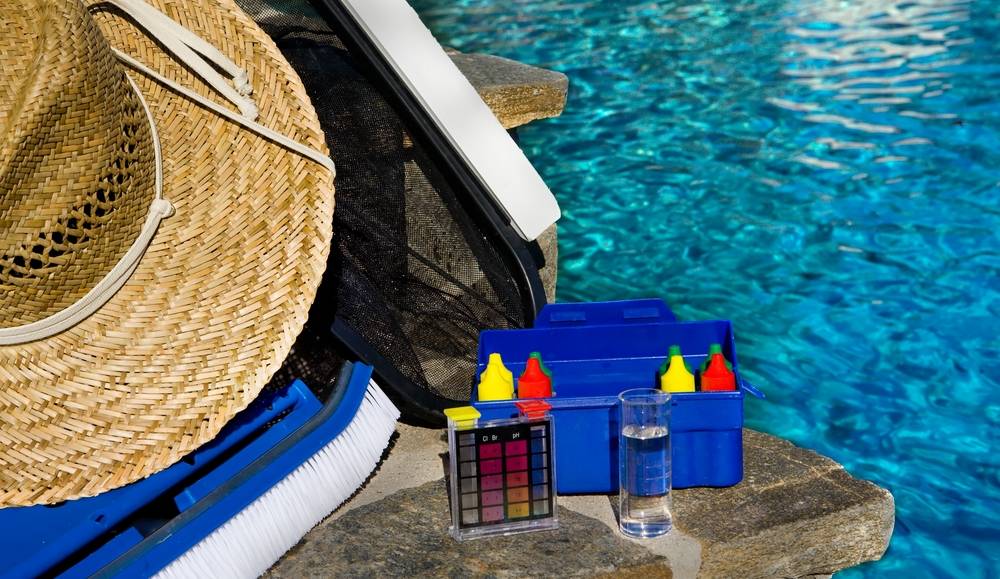
 www.troublefreepool.com
www.troublefreepool.com
Synopsis:
4 tests kits contain what you need:
*Taylor K2006 - this contains the least reagents
*Taylor k2006 C (bigger bottles)
*TF 100 - best value - more chlorine tests than k2006C
*TFPro - same as tf100 in a fancy case +speedstir
There’s a comparison chart here

Swimming Pool Test Kits Compared
What pool test kit should I buy? Why not use test strips? Our recommended test kits will pay for themselves in no time!
Thread Status
Hello , This thread has been inactive for over 60 days. New postings here are unlikely to be seen or responded to by other members. For better visibility, consider Starting A New Thread.


